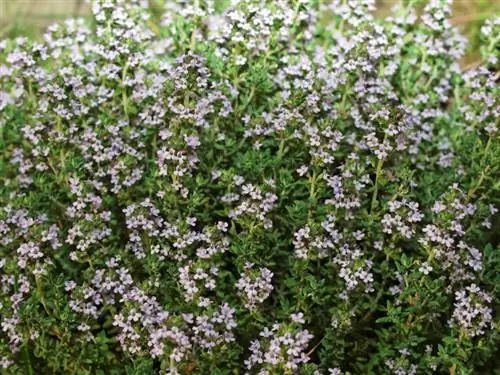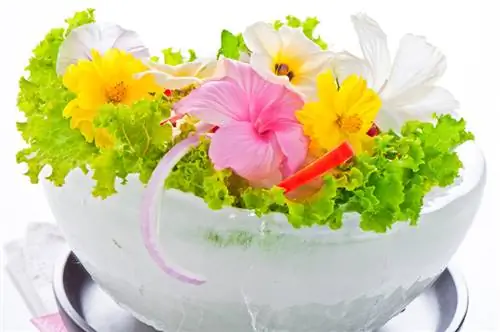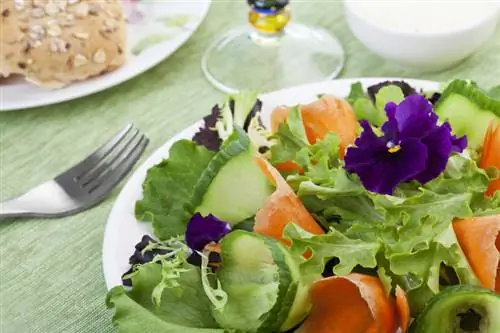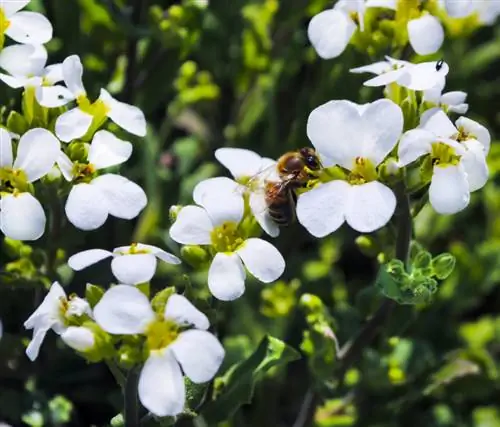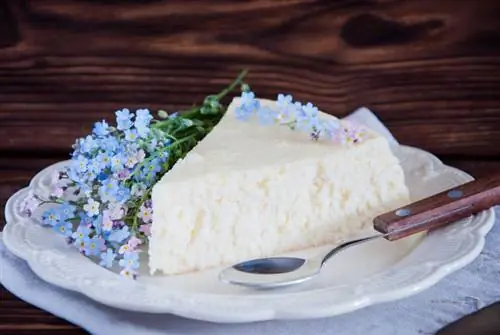- Author admin [email protected].
- Public 2023-12-16 16:46.
- Last modified 2025-01-23 11:20.
Just like lavender, thyme also conjures up a lush carpet of flowers with purple, pink or white flowers. Creeping varieties in particular offer an enchanting sight in the garden when they are flowering.
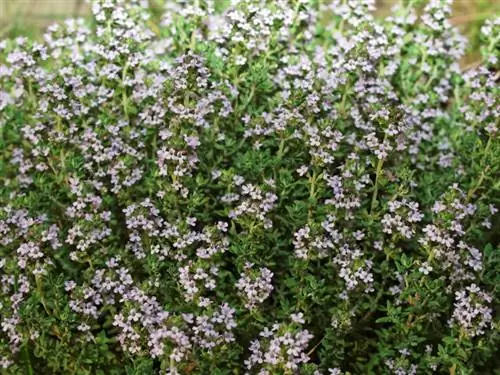
When does thyme bloom and are the flowers edible?
The flowering period of thyme mainly extends over the months of June and July, although some varieties can bloom into October. The thyme flowers are edible and are suitable for seasoning and garnishing dishes.
Thyme blooming time
Most of the approximately 210 thymes bloom in June and July, some even into October. If you want to use the leaves of the herb as a spice or as a medicinal herb, the concentration of aromatic essential oils is highest shortly before flowering. But flowering thyme can still be harvested, even if its taste is no longer quite as intense. Thyme leaves are best harvested at lunchtime, when they taste best.
Cutting thyme
If you want to harvest thyme in high quality all year round, you should prune the inflorescences regularly so that the plant sprouts fresh, aromatic shoots again. Thyme is a perennial subshrub whose older shoots become woody over time - if possible, do not cut into the old wood, as new shoots will form from the green branches. The flowers are pollinated by insects such as butterflies or bees - the nectar-rich thyme is a popular bee pasture - and then develop brown seed capsules, the so-called nuts.
Thyme flowers are edible
Not only the leaves but also the flowers of thyme can be used to season and garnish dishes. For this purpose, cut off entire stems with leaves and flowers and use them either fresh or dried. Unlike many other herbs, thyme retains its aroma even when dried.
Thyme potatoes
A delicious alternative to rosemary potatoes is the lesser-known preparation with thyme. Boil small new potatoes with their skins on in s alted water and then fry them all over in butter with fresh or dried, grated thyme leaves. The finished thyme potatoes can be beautifully decorated with thyme flowers.
Tips & Tricks
You can also preserve thyme by soaking the stems with leaves and flowers in honey or olive oil to obtain deliciously flavored oil or honey - a great alternative to the rare thyme honey.

